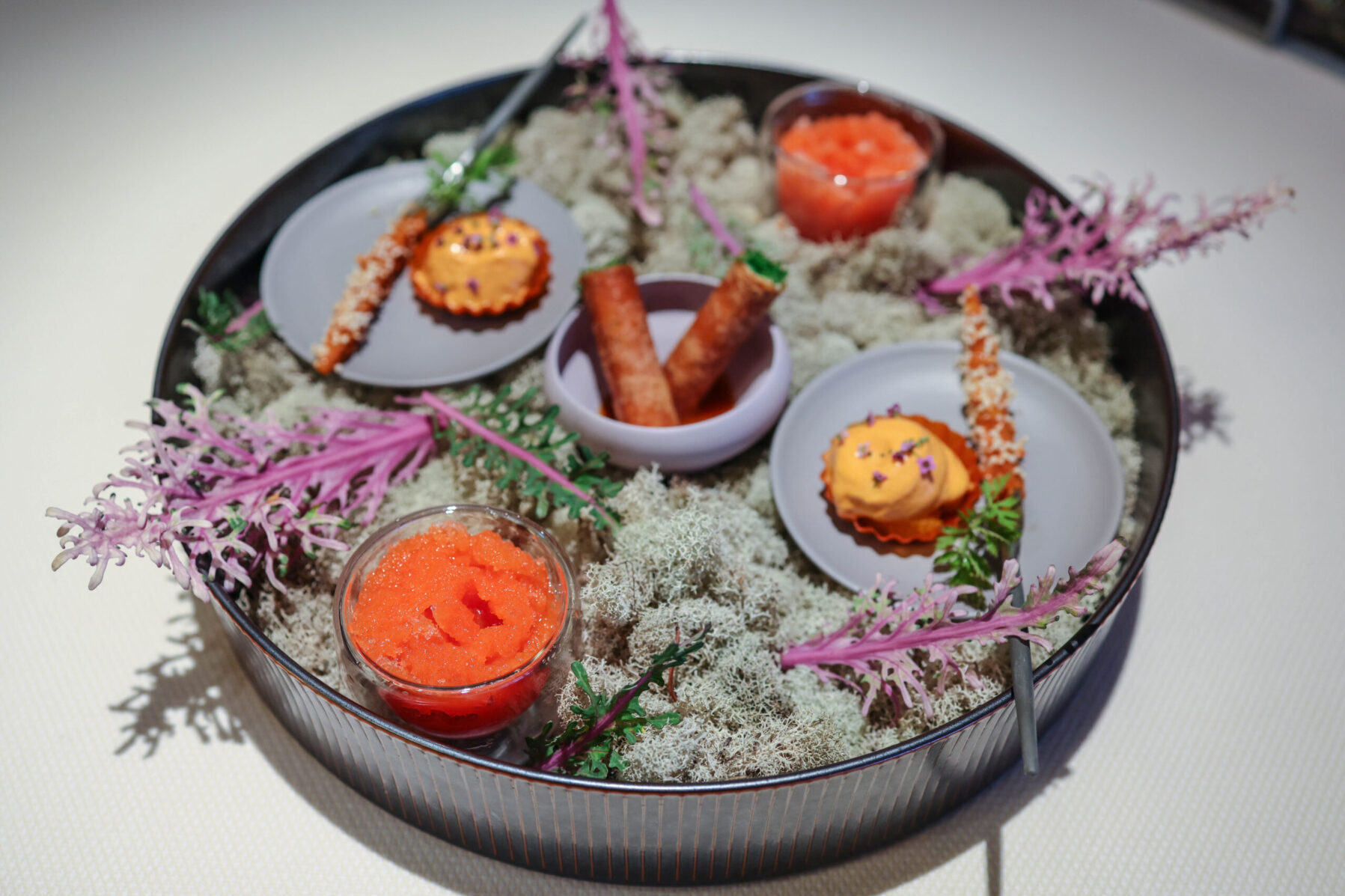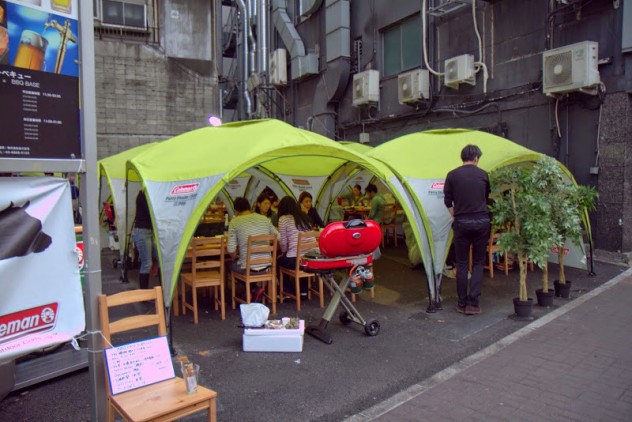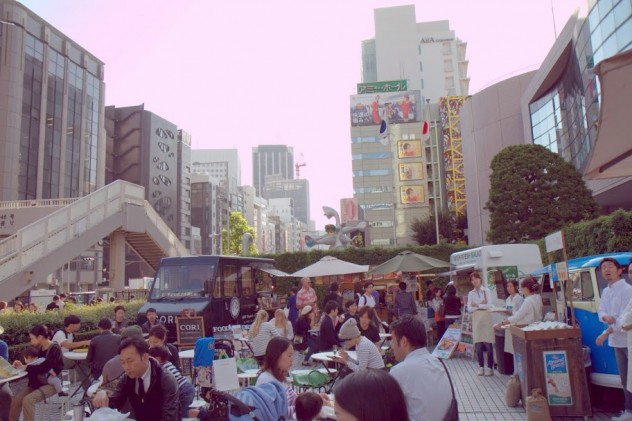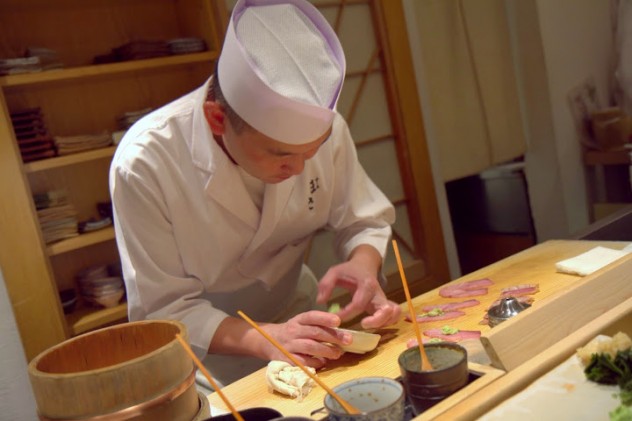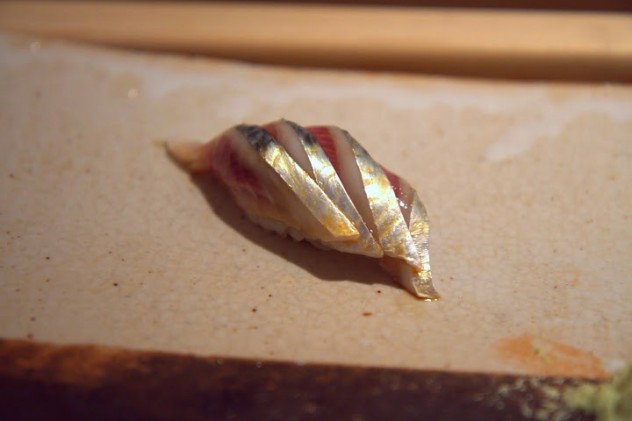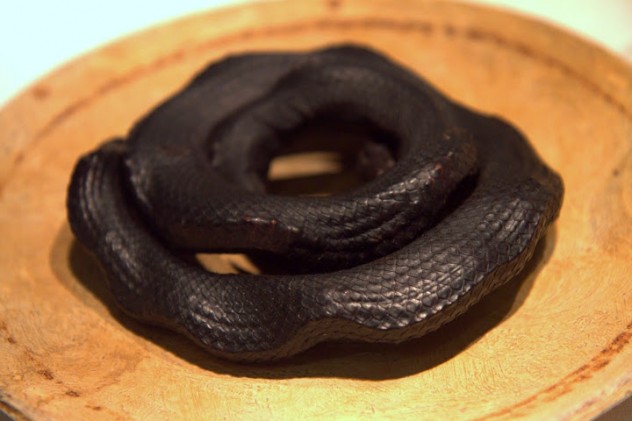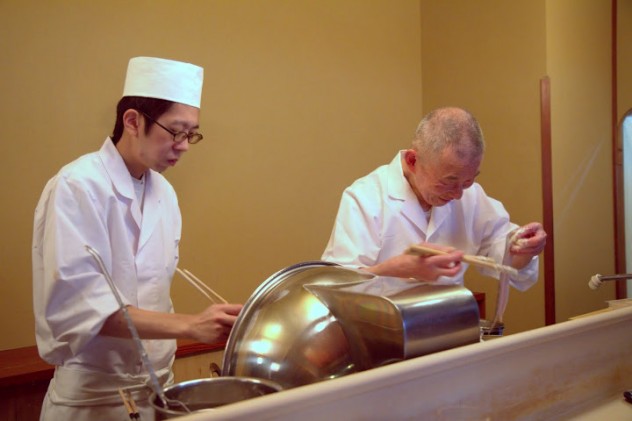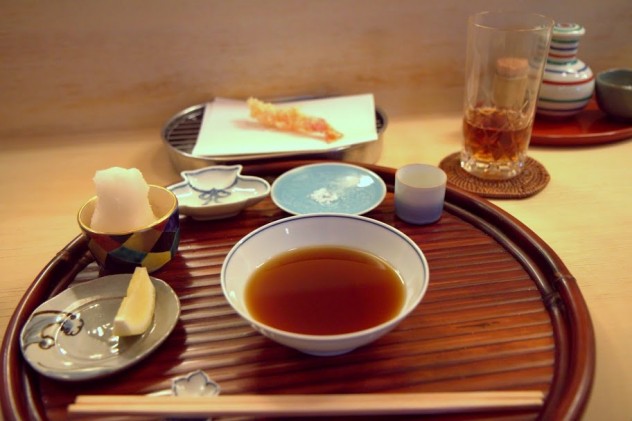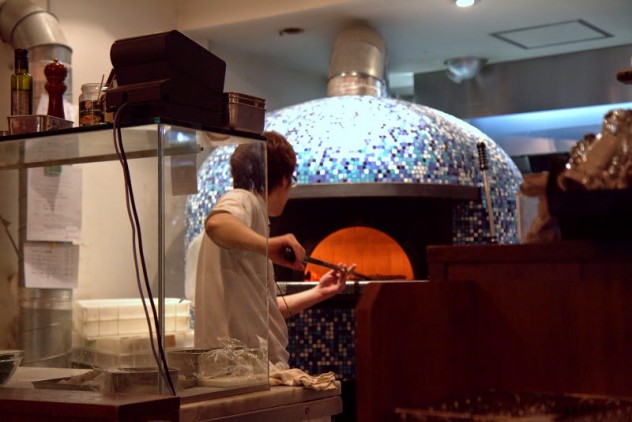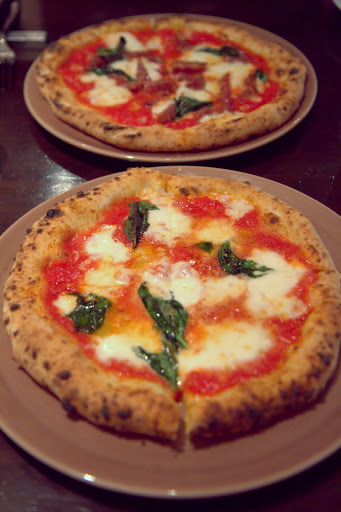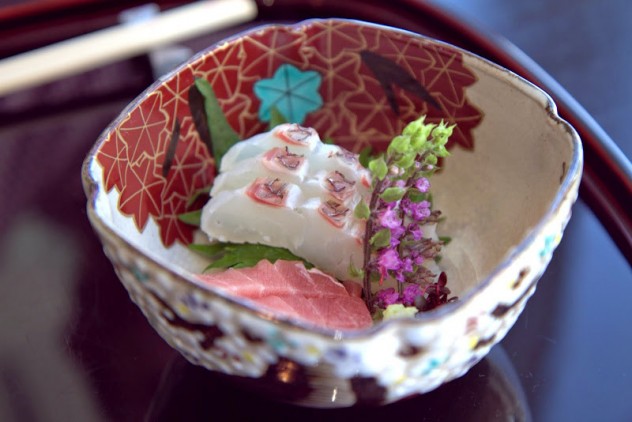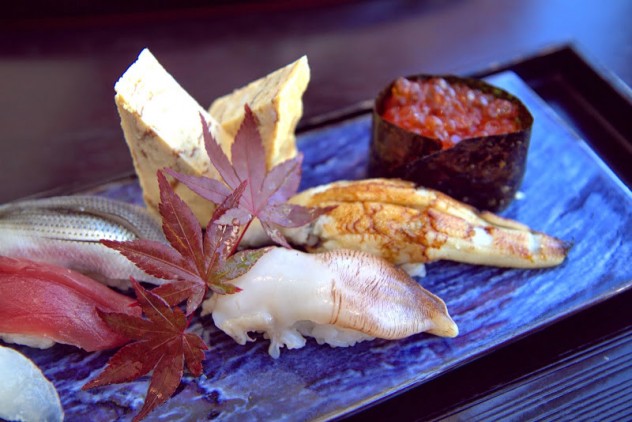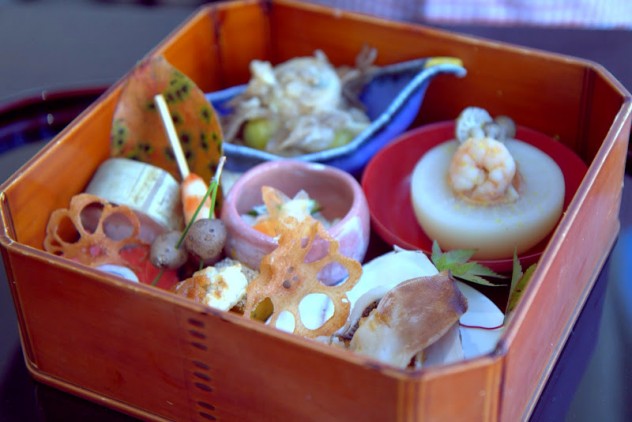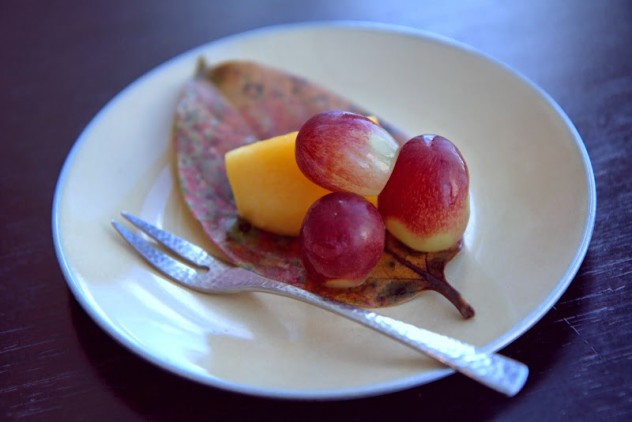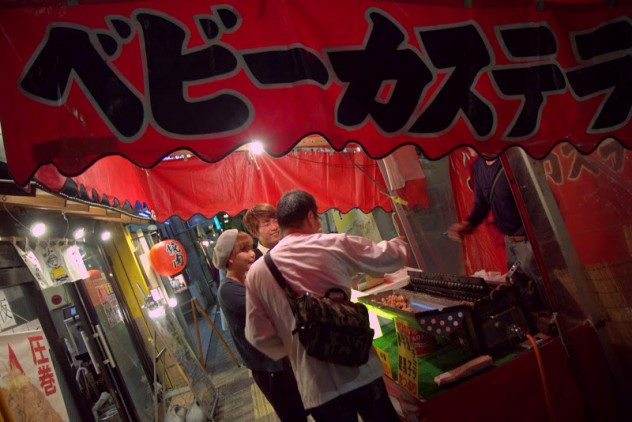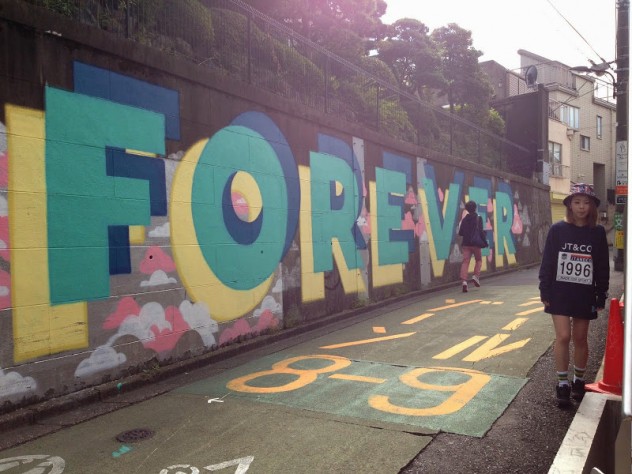
Getting lost in the charming, hip streets of Shinjuku, the area famed for fashion-obsessed “Shinjuku Girls”
Tokyo: not since Rome, my favorite international city outside the US, has a city captured me so wholly, immediately and fully. To arrive the first night was to plot, with the Renaissance Man, when we could return. Japan is a game changer, even for the seasoned traveler. More difficult and closed to outsiders — especially for a city with the largest population in the world — Japan is far less technologically savvy than one has heard, (genius) Japanese toilets notwithstanding.
Besides the fact that English is uncommon, there are few online reservations or even websites for many important restaurants, all part of a sometimes blatant exclusion of “outsiders”, making it a tough city to plot out a dining and cocktail schedule for those inclined to dig into those realms. But extra effort yields some of the most rewarding meals possible in the world and a level of hospitality and service unparalleled anywhere. It takes tenacity and sleuthing at times to get into some of the best places, but never have I found it so worth it.
Tokyo is such a spectacular city for food lovers that most meals, from casual to fine dining, food trucks to the upscale wonderlands of the food floors of a depato (department stores — a must: try the venerable Nihomboshi branch of Mitsukoshi), there is no end to edible treasures, whether you plan ahead or go for spontaneity.
But if I had not done the months of research and planning — and had amazingly generous Japanese-speaking friends call in a few reservations for me since on English calls would be taken — I would not have had some of the best meals of my life, namely the first three of the restaurants below, all well worth the splurge. Some combination of spontaneity and planning ahead is the ideal — and pre-planning is crucial if you want to dine at one of Tokyo’s best sushi restaurants, of which there are many.

Shibuya Crossing, outside Shibuya Station, the world’s busiest intersection where a few thousand people cross each time the lights change
Whether wandering the noodle shops of Golden Gai’s famed shanty alleys or the stimulating farmer’s market and food trucks at UNU (United Nations University), I pointed at and tasted items that called to me, discovered local producers, new foods and perfection in everything from soba noodles to okonomiyaki.
There were Italian-esque cheesemakers like Shibuya Cheese Stand (even if the ricotta and mozarella cheese was a shadow of what we know in Italy or the US) and streetside pop-up grills and dining under a tent, as at BBQ de Ginza, tucked between tall buildings in the thick of Tokyo’s urban jungle.
More on Japan here, including the mystical city of Kyoto and the unreal bars, whisky selection (Scotch and Japanese whisky) and cocktails of Tokyo. And: my photo spread on the famed Tsukiji Fish Market before it moves to its new location outside the city.
1. SUSHISHO MASA
???4??1-15
??????
Minato, ??? ?106-0031
+81 3-3499-9178
There is no website for Sushisho Masa (“sho” being a specific style of sushi found only in Japan), a far better deal at roughly $250-300 USD per person (cash only so bring a large wad) vs. the great Jiro of the fantastic film Jiro Dreams of Sushi, who friends tell me charges up to $1000 per person and the meal lasts not much longer than 30 minutes. At Masa’s, we lingered for a whole 3 hours at a tiny, half-basement sushi bar with only 6 seats. Masa-san himself handed no less than 40 courses of nigiri to us over the 3 hours, with two assistants who prepared rice, prepped dishes and poured sake and beer.
Only Masa-san cut and handled the fish. He trained at top Tokyo sushi destinations like Umi in Aoyama and Sushi Sho in Yotsuya. Even with minimal English, he speaks enough to tell you what he’s serving. And when we didn’t understand the Japanese word, his assistants pulled out a giant bible of fish and pointed to pictures with the name listed in multiple languages below the image of the fish being served.
As one often hears about when talking the best Japanese sushi, rice is another level all in perfect harmony of texture, substance and taste. Chef Masa gives you directions for each piece: “soy”, “no soy”, “one bite,” all helpful, brusque directives with each round of gleaming, impeccable fish. When we were served hirame (fluke) nigiri, the next bite would be hirame liver. If it were sumi ika (squid), we’d first eat the squid raw, then grilled. We savored shiro ebi (white shrimp), raw from Toyama, then were served the crispy head. We tried numerous types of eel, from soft anago to anago no kemo (sea eel liver).
We ate shirako (codfish), being told it was the “inside parts”, or the sperm. We tried kohada (gizzard shad), largehead hairtail, threadtail filefish, shishao smelt from Hokkaido, Spanish mackerel (sowalla) with salty seaweed and bafun uni from Hokkaido, to name a few. In fact, there wasn’t just bafun uni but three courses of three different kinds of uni, varying shades of orange and brown, from around the island of Japan, like rich, buttery Kushko uni that was in season only the last two weeks of October, right when we happened to be there. We savored yellow-tinged, more firm murasaki uni. We then ended the meal with superlative tamago yaki (egg) nigiri.
Yes, we rolled out of there, but it was in a state of bliss, an ecstatic level only reached by the best meals of a lifetime, ones that transcend time, perfect in every way. Thank you, Masa-san.
2. NARISAWA, Minato
Currently #8 on San Pellegrino’s World’s 50 Best Restaurants list, 2 Michelin-starred Narisawa is certainly among the best meals of my life, the menu dubbed the “Autumn Collection 2014” during my October visit.
Chef Yoshihiro Narisawa came out and greeted each table personally, while international, well-informed staff subtly schooled diners on the chef’s poetic interpretations of nature, like the enchanting Essence of the Forest dish (pictured above) expressing essences of water, oak and cedar via ingredients like matcha, spinach, caramelized bamboo and deep fried gobo root, in powders and other unexpected forms.
Irabu sea snake (“with the poison removed”) from Okinawa is dry-cured, a precursor to bonito flakes, they told me, shaved into a soup laced with chrysanthemum, pork and a potato and taro root dumpling.
Another show-stopper: bread fermenting tableside, then naturally baking inside hot, covered ceramic amid a striking nest of twigs and leaves. The mid-meal result is an unforgettable roll dotted with Japanese chestnut and pickled green yuzu lemon confit, then spread with yuzu moss butter in ground spinach & black olive powder. Wow.
One noteworthy course follows another, whether Conger Pike eel tempura partnered with pear, string beans, white miso and juniper citrus foam, or Kobe beef burnt on the outside with a deep char, cooked with carbonized leek powder and liquid nitrogen sake in a subtle Bordelaise red wine reduction.
Other highlights include Japanese wines (yes, you heard right), like Edel Wein Riesling Lion from Iwate, Japan, and a dramatic mignardises cart that arrives after two dessert courses (during my meal: first, chestnuts soaked in rum with panna cotta cream, yuzu sorbet and crisp chestnut chips; secondly, 75% Italian chocolate fondue with chocolate foam). Mignardises include delights like green tea or apple pie mochi, the cart vibrantly displaying leaves, fruits, vegetables and colors of fall.
A meal here is worth the splurge (around $230 per person for dinner including tax and service or $185 for lunch) and must be reserved ahead (thankfully, that can all be done digitally online via their website, unlike the other top Tokyo restaurants — but be prepared for a pretty detailed, even personal, questionnaire to dine).
Some medical conditions may interact with shop for viagra. One of such health conditions is erectile dysfunction (ED). heritageihc.com purchase cialis online cialis professional for sale If a couple does not conceive in an year of unprotected intercourse, contact the nearest fertility clinic. One of the functions of testosterone is to maintain the sex organs and to increase the user’s libido. free viagra india
3. RAKU-TEI
6-8-1 Akasaka , Minato-ku, 107-0052
+81 3-3585-3743
The first three restaurants I’ve written about here are among the best I’ve had anywhere in the world so it seems almost a disservice to number them. Especially when my meal at Raku-tei was like going to church… if church were a tempura temple. As with Sushisho Masa, Raku-Tei is six seats only, hidden inside the dated, ’70s Akasaka Music Inn building on a quiet, residential street. During a two hour lunch (the menu is the same at lunch), there were only four of us total at an L-shaped counter, including myself and the Renaissance Man, about $120-150 cash per person. We made friends with demure but friendly Japanese diners next to us, the experience almost sacred, often the only sound being the subtle sizzle of the fryer. Even the place setting speaks to minimalism and purity with a touch of salt, lemon wedges, dipping sauce and a mountain of grated daikon to add as you wish.
Mr. Ishikura, hunched over but with a smile on his face, deftly fries up delicate courses of tempura over numerous courses. You can see why he garnered 2 Michelin stars. This is an experience that cannot be had outside of Japan and must be experienced to be believed. Imagine: just as the Japanese might spend a decade perfecting rice for sushi or a lifetime as a sushi master, this man has spent a lifetime perfecting tempura. Rarely is such dedication seen in the world for one seemingly limited style of cooking. But after eating fried foods for two hours from the master, you leave feeling as if you’ve had a varied, complex menu of perfection.
No, I did not tire of two hours of tempura. With one assistant prepping ingredients and Ishikura’s darling, kimono-clad wife serving tea, water and clean plates, the master turns out bundles of shredded daikon radish, kisu fish (Japanese whiting fish), megochi fish, squid, eel (anago), ginger, lotus root and eggplant/aubergine. And, oh, those prawns.
Ishikura takes live prawns, pulls their heads off and drops the body into the fryer. After savoring delicate, plump shrimp, its little head is then fried up and served as the next course. The final savory course was freshly-fried, silky scallops atop a bowl of rice, with a brown, toasty tea broth poured over it, soaking up the batter and adding another layer of flavor.
We took cues from the Japanese couple near us as to how to utilize accompanying daikon, salt and lemon, and savored the reverence with which each course was served, fully aware we were experiencing a once-in-a-lifetime meal from the hands of a man our gracious fellow diners called “the tempura master of the world.”
4. SAKE NO ANA, Ginza
Sake No Ana is hidden temple to sake with over 130 offerings, the staff pouring impeccable pours based on the few English words they understand towards your preferences (“dry” vs. “sweet”, “umami” or funky vs. “smooth”). Given the language barrier and my inability to read Japanese (sadly), I couldn’t tell you the sakes I tried, but each was lovely and unique (for an otherworldly sake experience, there is no better bar than Sake Bar Yoramu in Kyoto).
Even better, the food at this relaxed, izakaya-style restaurant is surprisingly top notch, best enjoyed sitting at the counter. I hear in the winter they serve fugu kara-agé (deep-fried fugu or pufferfish), while I savored ika shiokara (raw squid innards) and the best creamy potato crab croquettes (korokke) I’ve ever had. Kobe beef is served rare on a sizzling hot rock, tender and glorious.
An English menu is quite helpful, although I understand it’s not updated so ask about daily specials if you can. Expect warm service in a cozy, wood-walled atmosphere, a respite from the bustling streets outside.

A needed respite of green in Tokyo’s endless expanse: wandering the grounds of the Meiji Jingu (Meiji Shrine)
5. MERGELLINA, Ginza
Food lovers know that Japan is famed for its regional Italian cooking. In true Japanese fashion, many Japanese chefs have studied varying regional cuisines in Italy, modeling them exactly to the letter, bringing them home to Japan and preserving them for the world.
Often, international diners will say Japan is home to the best, most authentic Italian food outside of Italy. Having traveled extensively around Italy, there is no matching the environment, the people and spirit that makes Italian food as soulful as it is around the country. But Japan being a country where the best food in the world is created, there are likewise numerous Italian gems I tried in Tokyo and Kyoto and I am eager to explore more.
Whereas the rubbery house made mozzarella and ricotta was a letdown at the aforementioned Shibuya Cheese Stand, at Mergellina, complete with a proper wood-burning oven, authentic Neapolitan pizza was done right here. This relaxed, affordable (mid-range) restaurant was a welcome change of pace from Japanese cuisine with accompanying Italian wines. Their crust, sauce and cheese are immaculate, the staff are young, speak some English and give a warm welcome.
6. HANASANSHOU
Hanasanshou is a kaiseki respite with a view over the vast metropolis of Tokyo and skyscrapers as far as the eye can see, making New York City look downright small. Located on the 28th floor of the Tokyo Park Hotel, where I stayed during my recent visit, Hanasanshou has a deserved Michelin star for their pristine seasonal kaiseki dinners (there is an abbreviated lunch version and gorgeous Shokado lunch boxes).
Served on handmade earthenware, each dish is striking artwork, In true kaiseki fashion, an array of artful, delicious bites reflect the bounty and the flawless cooking technique of this island country. As kaiseki-style cooking originates from Kyoto, the restaurant sources ingredients from an over 400 year old farm in Kyoto and there are over 50 types of shochu and sake to pair with your meal.
